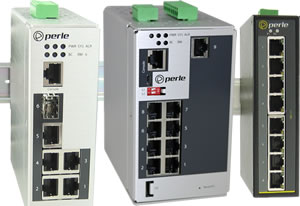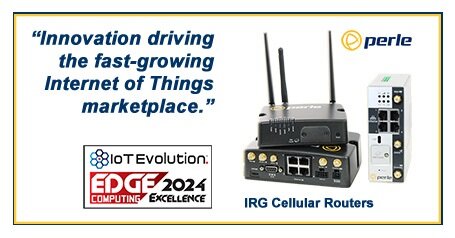
Edge computing creates new industrial networking challenges
By Max BurkhalterMay 24, 2016
We recently discussed how devices on the edge of the network - monitoring systems, sensors, etc. - are transforming the way industrial organizations must design their networks. As the Industrial Internet of Things continues to evolve, manufacturers are also beginning to explore the potential of putting actual computing devices at the end of the network. Computers at the edge of the network can take basic data being gathered by edge devices and process it closer to the machines that will use it, Automation World reported.
Computing on the edge
Successfully integrating small computing devices on the edge of the industrial network can unlock greater control of machinery and more responsive day-to-day operations. However, there are still barriers to finding success. According to the news source, the core problem with computing on the edge of the industrial network is that most organizations are depending on fieldbus systems that are not naturally interoperable with other networking systems.
"Communications advances are proving central in overcoming edge computing difficulties."
The issue here is fairly straightforward - the kinds of data and workflows that matter to fieldbus and other industrial systems are vastly different than those of traditional computing systems. The result is that the ways networks move data and databases store it are distinct, making integration particularly problematic. The report highlighted networking and programming challenges as major barriers to success here, but pointed out that communications advances are proving central in overcoming these difficulties.
Industrial Ethernet systems have emerged as critical solutions to many of the problems associated with integrating edge computing systems into the network. The news source explained that modern fieldbus-enabled devices are often capable of working directly with industrial Ethernet systems, breaking down many of the longstanding interoperability barriers that have existed within the sector.
The rise of industrial Ethernet systems is making it easier to integrate computing devices on the edge of the network because these solutions provide the combination of architectural functionality and ruggedness needed to support operations in close proximity to machinery. In particular, industrial Ethernet systems can:
- Withstand exposure to dust, debris and similar materials that come with operations on the factory floor.
- Handle the vibrations that are made by machinery operating nearby without experiencing performance degradation.
- Deal with extreme temperatures and atmospheric conditions such as humidity.
All of these capabilities add up to allow industrial Ethernet to provide near-lossless data transmission, something that is particularly important in when data is being delivered to machines that require incredibly precise timing. Furthermore, refined industrial Ethernet systems can allow for advanced routing capabilities that ensure critical data workflows are completed without interruption while non-sensitive data packets are pushed into the background. This can be key when it comes to edge computing, as some data will need immediate delivery to machines to prevent safety problems or operational disruption.
The sophisticated capabilities of industrial Ethernet systems are especially key as the IIoT creates technological hurdles that must be addressed.
Understanding the unique challenges of the IIoT
A recent report from Electronic Design explained that the IIoT presents organizations with unique challenges that are separate from what they would face if they were dealing with basic IoT systems. Basically, IIoT architectures are extremely similar to those used in the IoT, but the actual applications of the technology are much more specialized and focused on specific functions that are relevant to manufacturers. What it boils down to for industrial organizations is that IIoT systems are needed for such solutions as machine-to-machine communications, but lighting and similar systems will look much more like typical IoT settings.

Industrial Ethernet solutions make it easier to deal with IIoT systems.
Underneath this surface-level look at the IIoT vs. the IoT is an underlying networking challenge. For a long time, industrial networks have been built from highly specialized systems, often incorporating proprietary designs in order to meet business needs. This adds to the unique demands of IIoT systems as companies are tasked with integrating IIoT architectures into a such a proprietary network configuration that getting data between devices is not, on any level, a simple matter.
This is where industrial Ethernet stands out. Being able to break down the extremely complex proprietary network frameworks common in factories and similar settings makes the IIoT more accessible for organizations. Industrial Ethernet tools let companies integrate new devices into the network without facing the interoperability challenges that come with highly specialized systems. In particular, the Electronic Design report explained that the need to integrate existing network systems into IIoT architectures is presenting manufacturers with major challenges.
Using industrial Ethernet as a foundation for your network can simplify this process, and serial-to-Ethernet terminal servers can make it easier to interconnect serial systems that are common in industrial equipment with the new Ethernet systems. The more standardized architectures of industrial Ethernet systems can empower organizations to more easily integrate IIoT devices into the network, including robust solutions such as small computers residing at the edge of the network.
Perle has over 516 models of Managed Industrial Ethernet Switches with the vast array of options including 10/100/1000 Ethernet, PoE, fiber and combo ports. Perle IDS Industrial-grade Ethernet Switches are ideal for the harsh environments found in industrial factory systems and outdoor applications.



